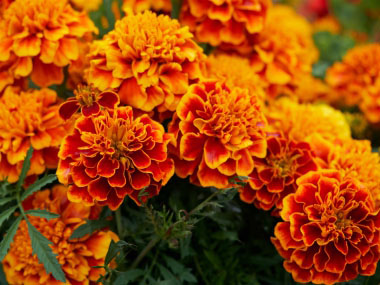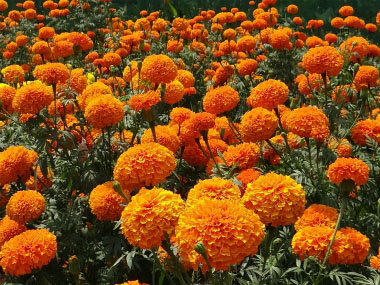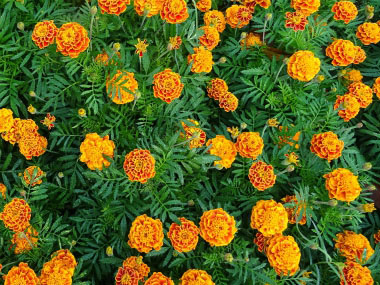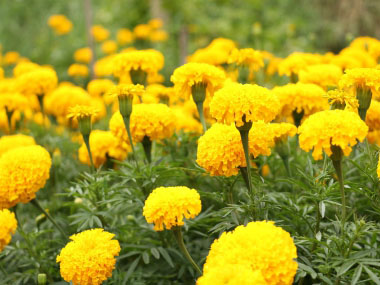





To support our efforts please browse our store (books with health benefits, etc.).
Marigolds have an extensive history. They were revered by the Aztecs and used medicinally, ornamentally and in religious rites. The Spanish and Portuguese explorers brought them back to Europe. There they were referred to as “Mary’s Gold” in reference to the Virgin Mary. Flower petals can be tossed into a salad or used to make tea, colouring foods, and they can be used as a substitute for tarragon. Marigolds contain what industry believes to be the best source of lutein and zeaxanthin and are cultivated to produce vision health supplements.
 Fields
of Nutrition has medicinal benefits and vitamin/mineral content of Marigold.
Fields
of Nutrition has medicinal benefits and vitamin/mineral content of Marigold.
Seed Life Cycle
Annual.
Colours
Orange, yellow, as well as a combination of oranges and yellows.
Height
Depending on species, up to 30 cm (1').
Health Benefits
The marigold plant is an anthelmintic, aromatic, digestive, diuretic, emmenagogue, sedative and a stomachic. They have been used internally in the treatment of indigestion, colic, severe constipation, coughs and dysentery. Externally, they have been used to treat sores, ulcers, and eczema. A poultice of marigold leaves can be applied to treat boils and carbuncles. The flowers are also a carminitive, diuretic and vermifuge. A decoction is used to treat colds. Marigold flowers are excellent for eye health. The medicinal potential will vary depending on the species. This information is specific to the Tagetes erecta.
Dye
These flowers are commonly used in Pakistan and India to dye cloth.
Winter Survival Food Handbook

PDF Plant Magazines
Types of Wild Food
Geographic Zones Seasons
Disclaimer
EdibleWildFood.com is informational in nature. While we strive to be 100% accurate, it is solely up to the reader to ensure proper plant identification. Some wild plants are poisonous or can have serious adverse health effects.
We are not health professionals, medical doctors, nor are we nutritionists. It is up to the reader to verify nutritional information and health benefits with qualified professionals for all edible plants listed in this web site. Please click here for more information.
Why Edible Wild Food?
- Food costs are rising
- Free, wild food is readily abundant
- Wild food adds nutrition to your diet
- Wild food can help treat various medical conditions





